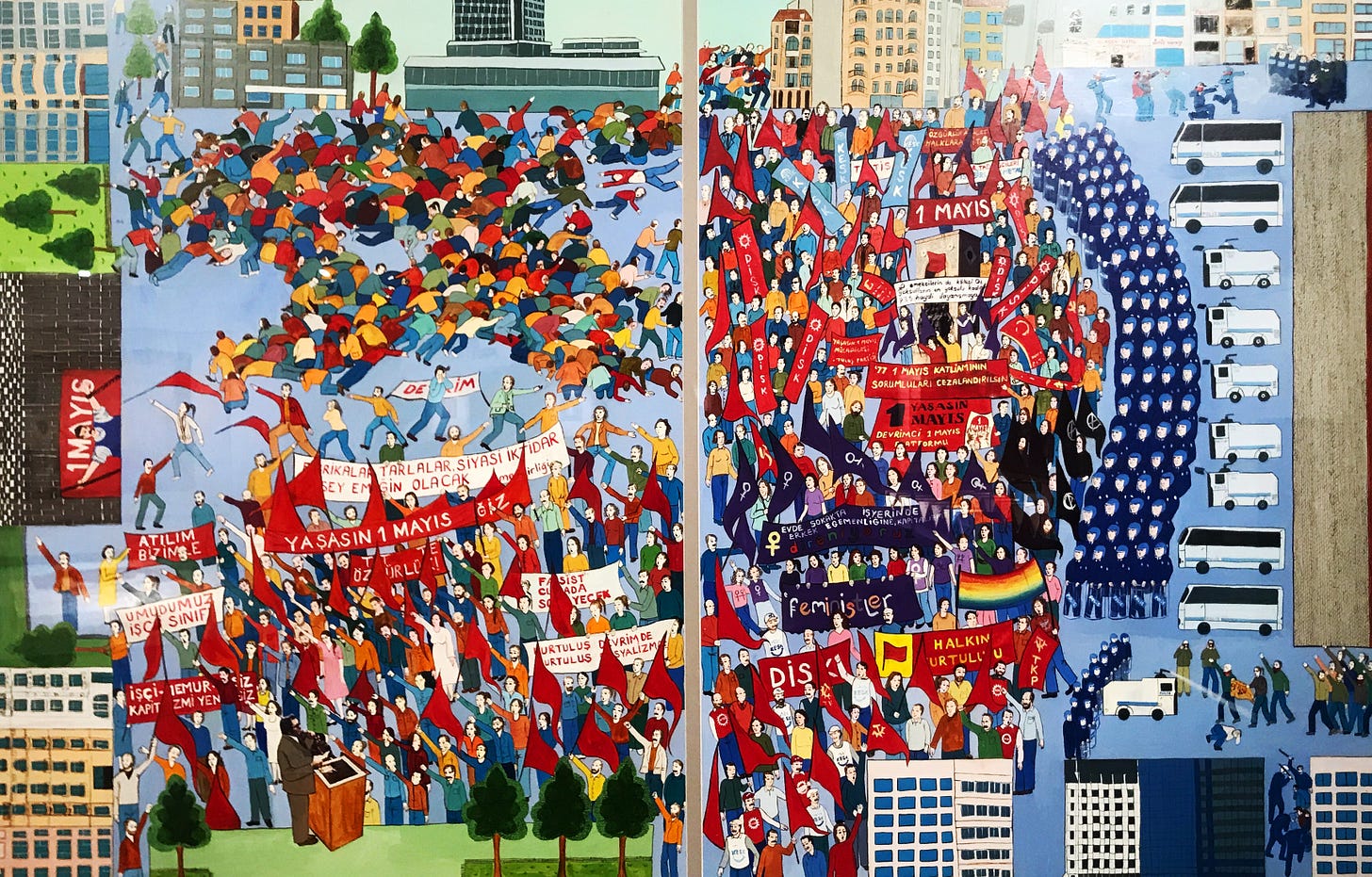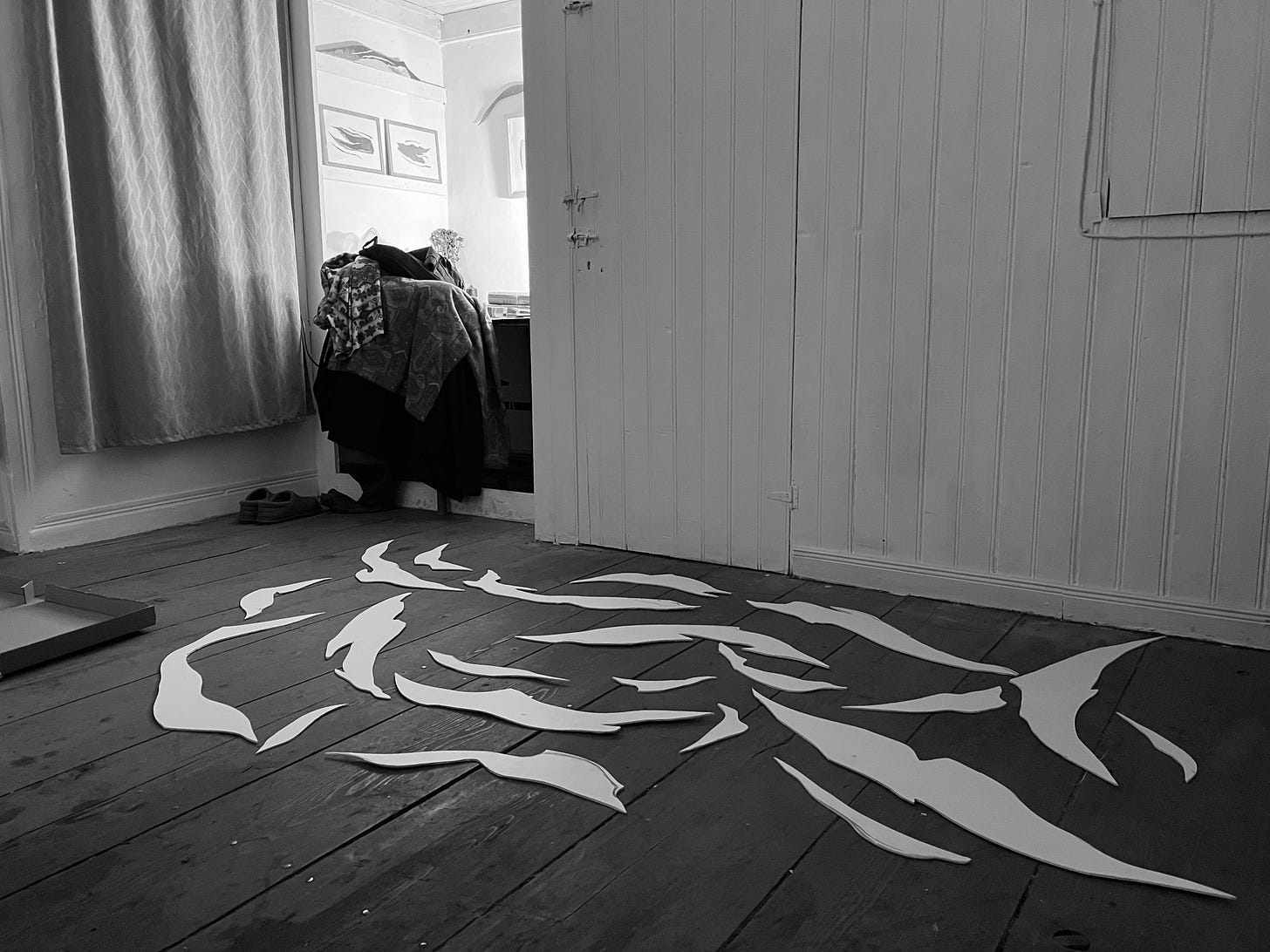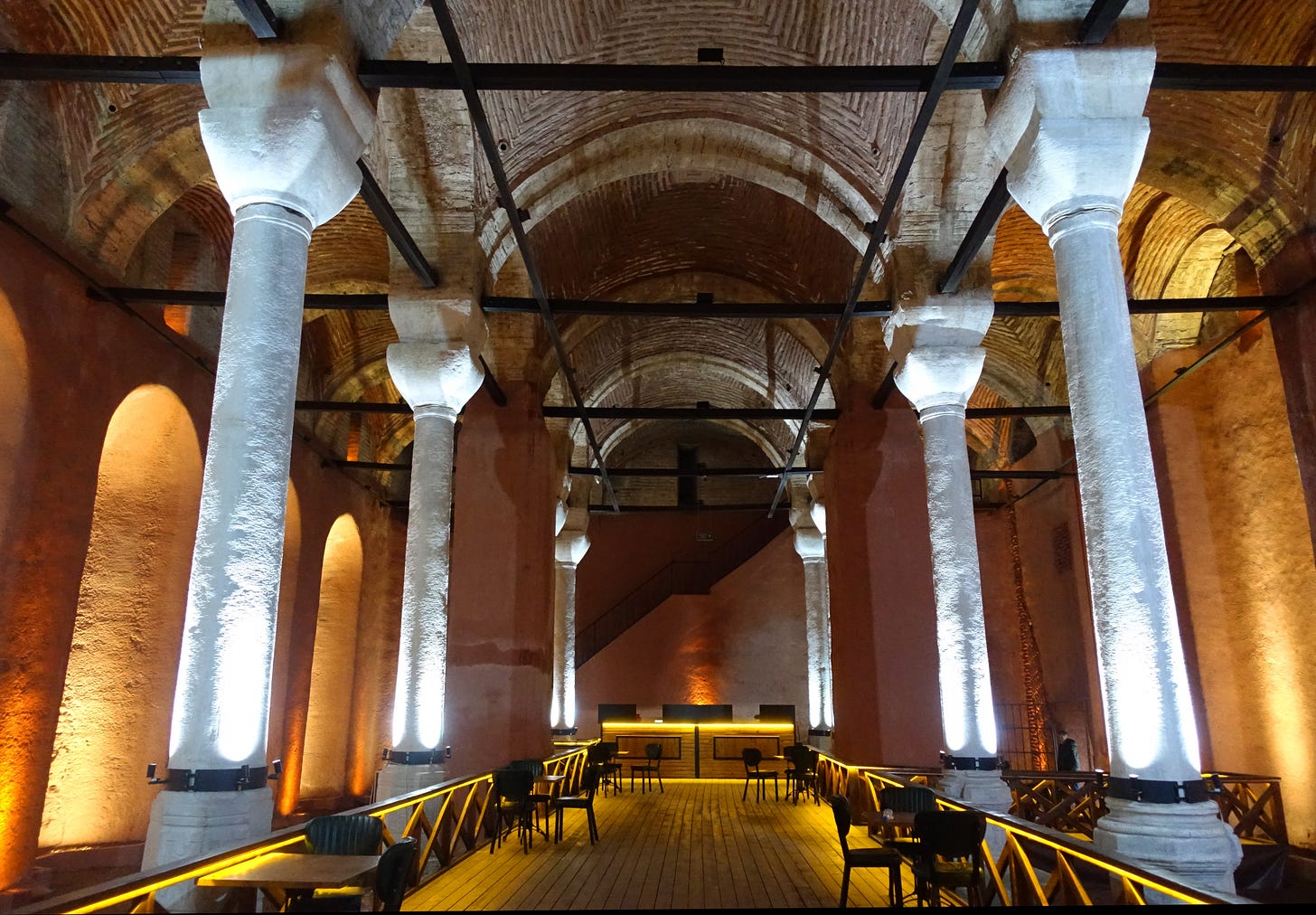What's on: May Day movies, artistic freedom under attack, and more
A biweekly roundup of art exhibitions, cultural events, and arts and culture news in Istanbul and elsewhere in Turkey.

Workers’ lives and the labor struggle on film
After a May Day dampened by rain as well as the usual lockdowns of central neighborhoods and police arrests of demonstrators, the International Labor Film Festival officially opens this evening at Atlas Cinema in Beyoğlu with a screening of Cycle, an award-winning drama about domestic workers in a wealthy household in Istanbul. With parallel programs in İzmir and Ankara, the festival showcases fiction and documentary films about the lives of working people. This year’s lineup features a retrospective of the works of director Yeşim Ustaoğlu, including her award-wining 1999 film Journey To The Sun. Also keep an eye out for the shorts We Need to Talk About Dilan and the touching Hi Mom, It’s Me, Lou Lou; the documentary Exam at the Edge of Time about students and teachers in earthquake-ravaged Hatay; and the very timely Ghost Workers, about the hidden human labor behind AI.
🎥 The 20th International Labor Film Festival runs until 11 May at various venues in Istanbul, Ankara, and İzmir. All screenings are free. Most Turkish films are screened with English subtitles while international films generally only have Turkish subtitles.

Artistic freedom under attack – in Turkey and worldwide
With wars continuing to rage in Gaza and Ukraine and chilling attempts to silence critical voices on the rise in many parts of the world, “artists and arts institutions, even those in democratic countries, speak even more of needing to self-censor in order to avoid negative repercussions,” the NGO Freemuse writes in its State of Artistic Freedom 2025 report, released today. The report documents examples of both repression and resilience in the arts across various mediums, with regional focuses on Sub-Saharan Africa, Latin America, and Eastern Europe.
The section on Turkey, which cites my reporting for Hyperallergic, highlights institutional censorship and self-censorship in the cultural sector; pressure on Kurdish and LGBTQ+ artists; and restrictions on streaming platforms and film festivals. These findings were echoed in the Istanbul-based SUSMA Platform’s recently released Censorship and Self-Censorship in Turkey 2024 report (available in Turkish only).
Help keep this newsletter going!
Istanbul etc. is an independent, reader-supported publication. Free subscriptions and shares help it grow, but paid subscriptions are what give me the time to devote to researching and writing this newsletter and keeping it going. Paid subscribers also get access to my full Google Calendar (see preview above) of arts and culture events in Istanbul and sometimes elsewhere in Turkey; subscriber-only chat with updates and bonus event photos and information; and other extras to be introduced soon.
Inside the Zeyrek Cistern
As someone mildly obsessed with the remnants of Istanbul’s centuries-old water system, I’ve often marveled at the towering brick wall with 10 prominent arched niches running alongside busy Atatürk Bulvarı in the Fatih district. A small sign outside identities it as the exterior façade of the Zeyrek Cistern, which is thought to have been one of the largest Byzantine cisterns in the city (and one of the few that was partially aboveground). Also known as the Unkapanı or Pantokrator Cistern, it served the 12th-century Pantokrator Monastery (later converted into the Zeyrek Mosque) on the hillside above, though it may have been built much earlier.
Recently I saw on social media that the long-neglected cistern had been opened to the public so I had to go take a look for myself. Unfortunately, the undeniably impressive interior feels over-restored, with a heavy amount of pink plaster and a cafe inside, while no effort has been made to provide any information about the structure, much less its historical role. There’s not even a sign indicating the entrance, admission price, or opening hours; the guards sitting inside a glass cube with a tacky multicolored chandelier on the main road said entry was 300 TL for “tourists” and 100 TL for Turks – but conceded foreigners with an ikamet could pay the lower price. The upper level of the cistern still seemed to be under restoration, so perhaps it’s a work in progress but for now I can’t recommend going out of your way to visit.
Recommended reads etc 📚 🎥 🎧
A new exhibition by young Syrian artists in Damascus on the theme of forgiveness seeks to chart a new path for art that is part of neither state propaganda nor protest, Robert Bociaga writes for The Markaz Review.
The recent group show The Volcano Lover at Galerist in Istanbul “delves deep into the paradox of the volcano – both a force of ruin and a source of renewal,” Ayla Jean Yackley writes for Canvas.
Writer Caroline Eden shares her playlist of tracks from the Black Sea region, Central Asia, and the South Caucasus to accompany her three-book series Black Sea, Red Sands, and Green Mountains.
Turkish photographer Sıla Yalazan talks to Huck magazine’s Isaac Muk about photographing the 2013 Gezi Park movement and capturing joy and beauty amid tension and change in Istanbul.
The recent government crackdown on the political opposition in Turkey has “ensnared members of the culture community,” Ayla Jean Yackley reported for The Art Newspaper, while Emily Rice Johnson wrote for Turkey Recap about the intersection of art and protests.
And in case you missed my last newsletter, on the very moving 23.5 Hrant Dink Site of Memory in Istanbul, here it is again:






